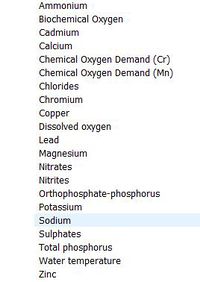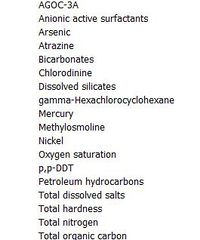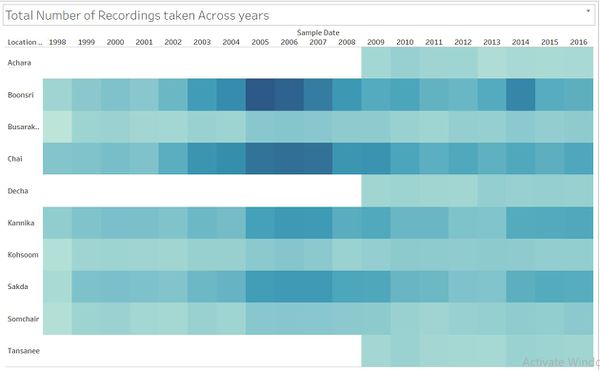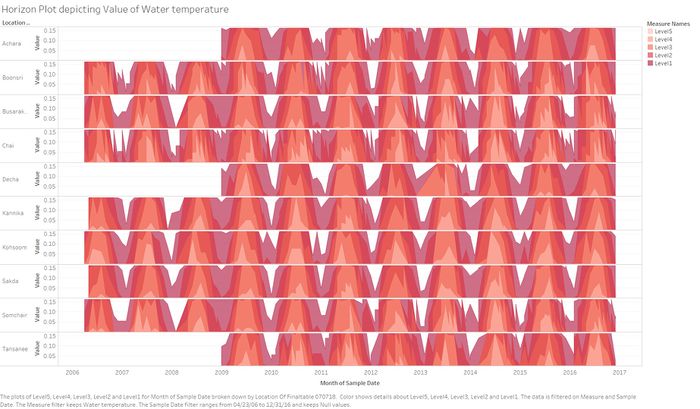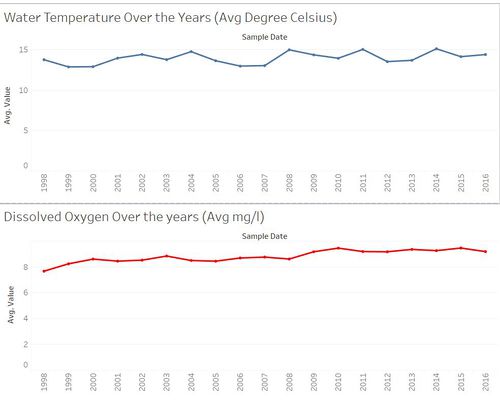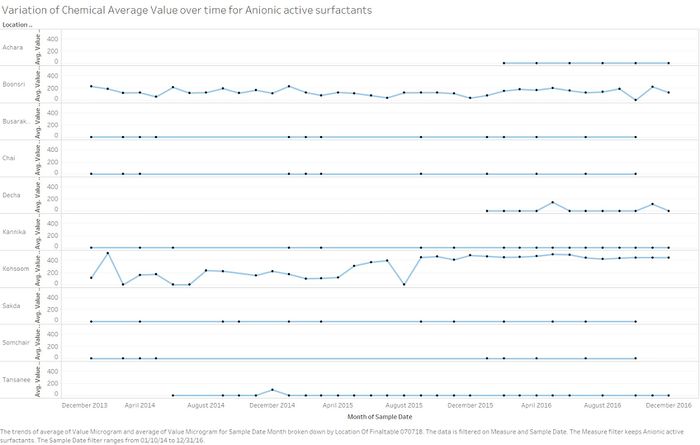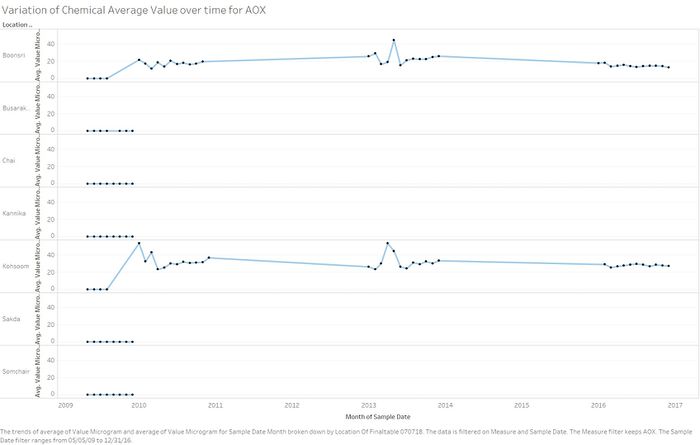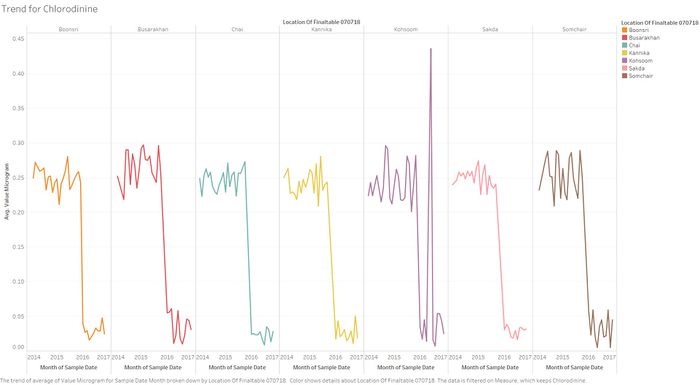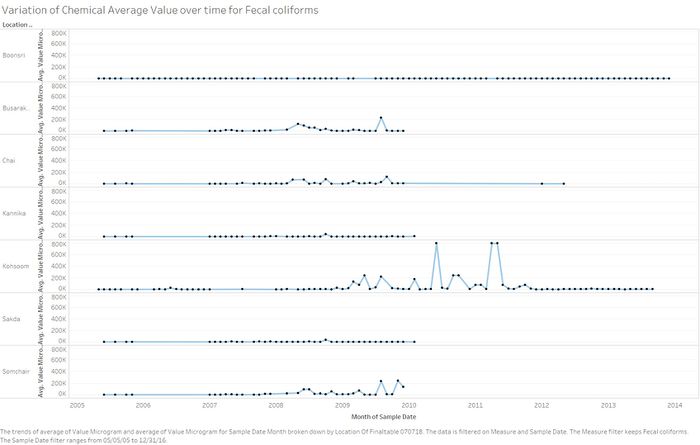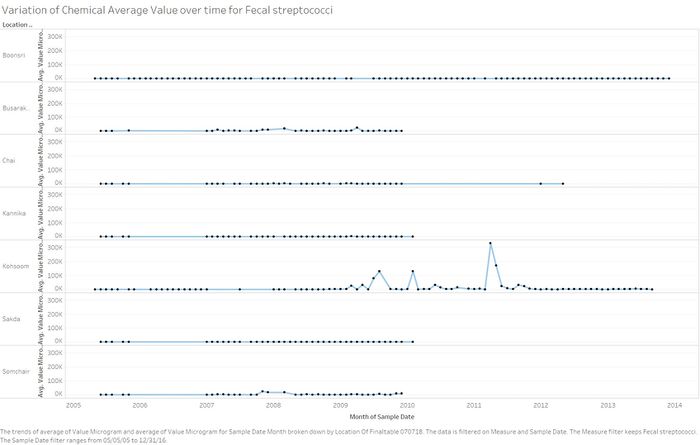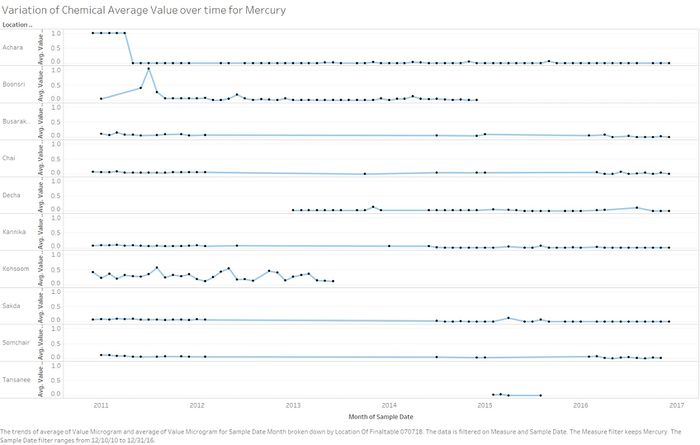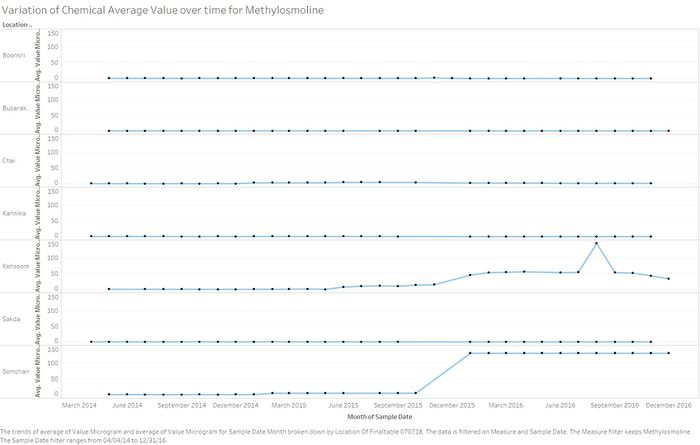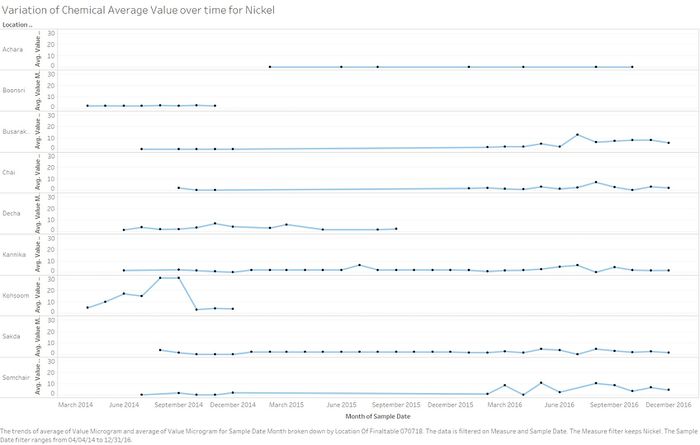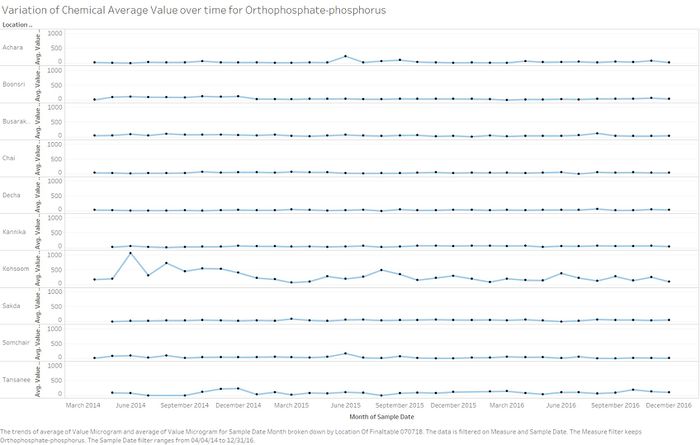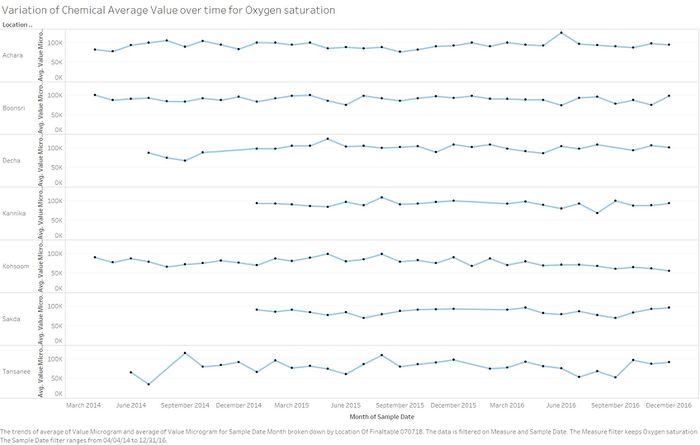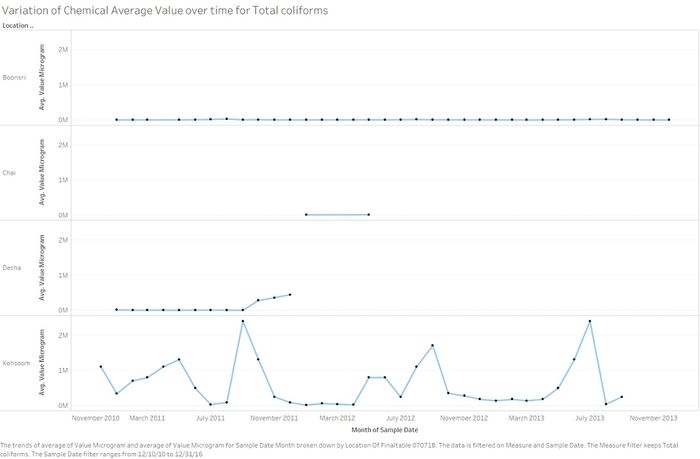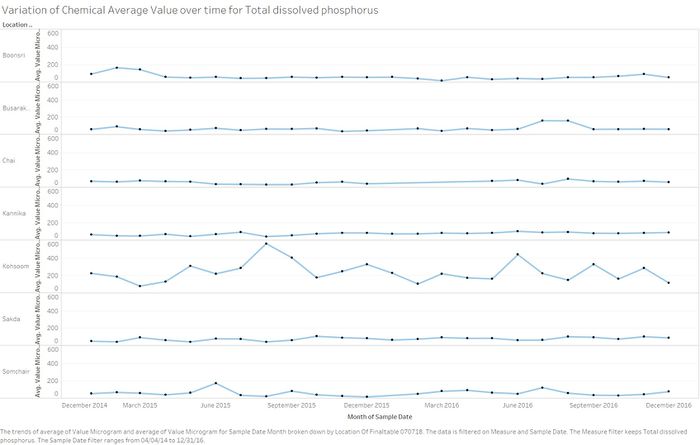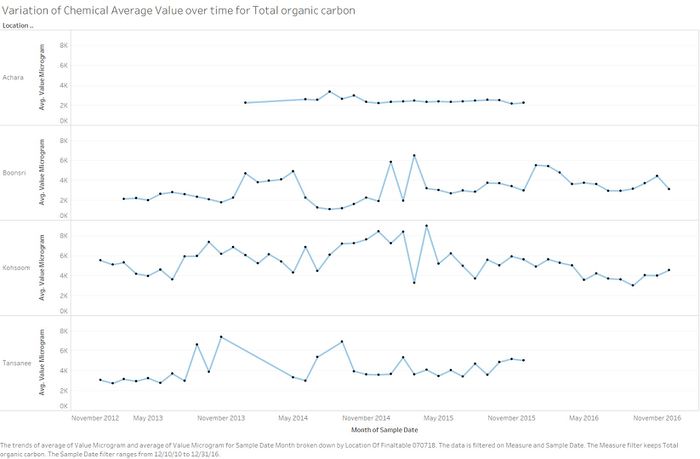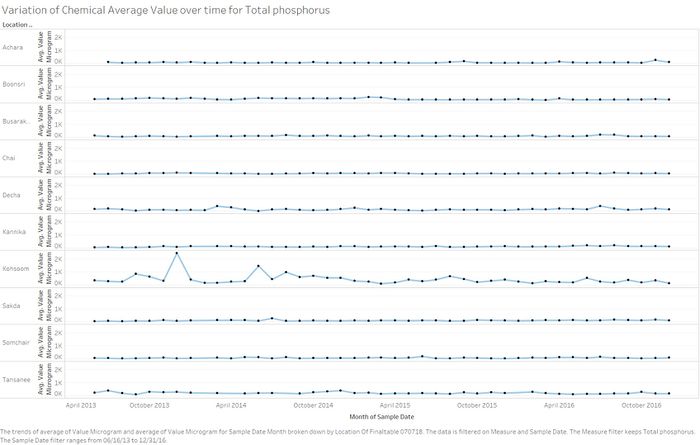ISSS608 2017-18 T3 Assign DiyaNR visual insights
Jump to navigation
Jump to search
VAST MINI CHALLENGE 2
|
|
|
|
|
|
The analysis was done with the joint dataset consisting of 106 chemicals sampled across 10 locations.
The dataset covers 19 years from 1998 to 2016. The analysis was done as follows,
Initial Analysis
On inspection it can be observed that the chemicals have not been sampled consistently.There are chemicals which have been sampled across all years and those which have been sampled across some years.Due to this the chemicals can be grouped as follows:
- The following are the chemicals measured across all the years:
- The following are the chemicals that have been sampled better over the later years (2002 onwards). There is inconsistency in the data.
- The following plot shows the number of recordings, taken across the years in the 10 locations:
The Horizon Plot
- The following horizon plot was used to identify chemicals that stood out in terms of intensity.Through the horizon plot across the regions, a seasonal pattern can be observed in the water temperature with higher values during the months of June, July and August, indicative of summer months.
- There are upward trends seen in the water at Kohsoom, Busarakhan and Chai. On further plotting, it was also found that as the average water temperature increases, there is a decrease in the value of dissolved oxygen.
- The horizon plot can be accessed at the following Link: [1]
Analysis by Chemicals
- Based on the observations made from the Horizon Plot, the following chemicals were found to have significant trends, as represented in the Control Charts:
|
Measure |
Inference |
|
Anionic active surfactants |
|
|
AOX |
|
|
Chlorodinine |
|
|
Fecal coliforms |
|
|
Fecal streptococci |
|
|
Mercury |
|
|
Methylosmoline |
|
|
Nickel |
|
|
Orthophosphate-phosphorus |
|
|
Oxygen saturation |
|
|
Total coliforms |
|
|
Total dissolved phosphorus |
|
|
Total organic carbon |
|
|
Total phosphorus |
|
